How Op. True Promise III cemented Iran’s status as global military power
By Mohammad Molaei
In the early hours of June 13, Friday, the Israeli regime launched an unprovoked aggression against the Islamic Republic of Iran, resulting in the martyrdom of several high-ranking military commanders, nuclear scientists and others.
This unprecedented act of aggression prompted Iranian armed forces to immediately initiate retaliatory measures in the form of Operation True Promise III.
Given the significant geographical distance between Iran and the occupied Palestinian territories, a ground response was not feasible, leaving aerial strikes as the only viable option.
Shortly after the enemy’s cowardly aggression, a number of Shahed-136 kamikaze drones were deployed, aimed at engaging the Israeli air force, reducing the pressure of potential counterattacks, and providing critical time to recover from the initial shock and restore the country’s air defense capabilities.
The goal was to disrupt the enemy’s air operations and buy time for the preparation of a highly sophisticated, properly coordinated and precise response.
At around 11 p.m. local time that same night, Iran launched its first wave of missile strikes at the occupied territories. This wave included a variety of ballistic missiles, such as Fattah, Kheibar Shekan, Emad, and Qadr, all fired with pinpoint accuracy toward strategic Israeli military and intelligence targets.
The primary objectives were the city of Tel Aviv and key Israeli air bases, including the Nevatim Airbase, a central hub for Israel’s air operations against the Islamic Republic.
According to documented reports, several successful strikes were confirmed, with the hypersonic Fattah missiles gaining particular attention due to their speed and precision.
Iran’s top military general lauds nation’s resolve against Zionist aggressionhttps://t.co/uFvqVK6Di2
— Press TV 🔻 (@PressTV) June 21, 2025
These strikes went viral on social media, becoming a symbol of Iran’s missile prowess and once again exposing the inefficacy of Israel’s much-hyped air defense systems.
The retaliation continued with intensity and coordination, with multiple waves of missiles and drones launched toward the occupied territories until sunrise the following day.
Response to Israel, message to world
This operation was not only a decisive response to Israel’s wanton aggression but also a clear message of Iran’s growing defensive and offensive capabilities to regional and global adversaries.
In the hours following the strikes, Iran’s armed forces assessed the damage inflicted on the enemy and began preparing for potential subsequent waves to deliver an even heavier response if the aggression persisted.
Subsequent waves of Iranian response were designed to escalate pressure on the regime. The second wave, launched around 3 a.m. local time, targeted new objectives, including economic and military infrastructure in Haifa, Ashdod, and port facilities in Eilat.
These strikes utilized a combination of Kheibar Shekan ballistic missiles and more advanced drones capable of penetrating deeper into multiple Israeli defense layers.
The third wave, executed near dawn, focused on Israel’s command and control centers, including intelligence headquarters near Tel Aviv and military bases in the Negev Desert.
These attacks aimed to paralyze Israel’s operational capabilities and disrupt its chain of command. Initial reports indicated that Israel’s missile interceptors, including Iron Dome and David’s Sling, failed to intercept Iran’s ballistic missiles, particularly the liquid-fueled Emad and Qadr, which rely on simpler technology compared to solid-fueled missiles like Fattah and Kheibar Shekan.
This failure stemmed from the fact that these systems were designed to counter short- and medium-range threats, not optimized for Iran’s ballistic missiles tailored for such scenarios.
IRGC says 14 strategic Israeli military sites hit in 18th phase of True Promise IIIhttps://t.co/UcPkzBNAmy
— Press TV 🔻 (@PressTV) June 21, 2025
Following the first wave and Israel’s inability to intercept the initial batch of missiles, the Israeli regime imposed strict censorship, banning the release of videos showing missile strikes on the occupied territories.
This move was intended to control public perception and prevent widespread panic among settlers. However, images and videos circulating on social media revealed the damage to urban and military infrastructure, particularly in Tel Aviv.
Hiding the high casualty toll
Israel also attempted to suppress news of casualties and destruction to conceal the true extent of the losses. Despite these attempts, unofficial reports and images from independent sources, including strikes on Israel’s stock exchange building in central Tel Aviv, underscored the severity of the damage.
A report published by The New York Times on June 28 revealed that Israel’s Arrow 3 missile defense system was facing a severe shortage of interceptors, forcing the regime to ration these missiles.
This report confirmed that Iran’s relentless missile barrages, particularly those involving highly maneuverable ballistic missiles, had pushed Israel’s air defense capabilities to their limits. Evidence of strikes on central Tel Aviv and the stock exchange building lent credence to The New York Times’ report, as Israel was compelled to rely on its short-range Iron Dome and medium-range David’s Sling systems to counter the incoming missiles.
These systems, not designed for intercepting ballistic missiles, allowed liquid-fueled missiles like Emad and Qadr, despite their older technology, to breach Israel’s air defense perimeter. This success highlighted Iran’s strategic depth and its ability to leverage a diverse arsenal to overcome the enemy’s limitations.
In the days following the retaliatory strikes from Iran, the Benjamin Netanyahu regime faced mounting internal and international pressure to address its military setbacks. Intelligence reports indicated that Iran had used precise information and meticulous planning to target weaknesses in Israel’s much-hyped air defense systems.
Scenes from the streets of Tel Aviv capture the aftermath of Iranian retaliatory strikes on the Israeli-occupied territories.
— Press TV 🔻 (@PressTV) June 21, 2025
Follow Press TV on Telegram: https://t.co/LWoNSpkc2J pic.twitter.com/P4KccbWcpc
Meanwhile, Iran’s armed forces fortified their defensive positions, ready to respond to any further aggression. Iran’s missile operation not only showcased its military strength but also demonstrated its capacity to deliver swift, coordinated, and effective responses to any aggression.
The operation had far-reaching political and psychological impact across the region, solidifying Iran’s position as a formidable regional power and a military bulwark.
Missiles used in Op. True Promise III - Fattah-1
Among the missiles used in True Promise III on the occupied territories, the hypersonic Fattah-1 stands out.
The Fattah-1, one of Iran’s most advanced operational hypersonic missiles, was deployed in this operation and holds a distinguished place in the missile arsenal of the Islamic Revolution Guards Corps (IRGC) Aerospace Force due to its exceptional technical features.
This mid-range ballistic missile, with an approximate range of 1,400 kilometers, is capable of striking strategic targets deep within the occupied territories. Its high speed and maneuverability make it one of Iran’s most effective weapons against the most advanced air defense systems.
Fattah-1 reaches speeds of 13 to 15 Mach (approximately 16,000 to 18,000 kilometers per hour) during its terminal dive phase, rendering it extremely difficult to intercept by air defense systems such as Israel’s Iron Dome, David’s Sling, and Arrow 3.
A key feature of this missile is its maneuverable warhead (Hypersonic Glide Vehicle, or HGV), equipped with a spherical solid-fuel propulsion system and a movable nozzle, enabling complex maneuvers both inside and outside the atmosphere.
This capability, combined with its advanced aerodynamic design, allows Fattah-1 to follow unpredictable trajectories, evading detection by enemy radars, including the TPY-2 radar of the THAAD system and Israel’s Green Pine radar.
During its hypersonic glide phase, Fattah-1 travels at high speeds in the upper layers of the atmosphere (between 30 and 80 kilometers), where the curvature of the Earth limits the detection capabilities of ground-based radars.
At this stage, the intense pressure and high-speed airflow over the warhead’s surface generate temperatures ranging from 6,000 to 10,000 Kelvin, comparable to the surface temperature of the sun.
This extreme heat ionizes the surrounding air, forming a plasma layer around the warhead. This phenomenon, known as “plasma blackout,” absorbs or deflects radar waves, rendering the missile virtually invisible to enemy radars.
▶️ New footage of Iran launching missiles against occupied territories
— Press TV 🔻 (@PressTV) June 21, 2025
Follow: https://t.co/mLGcUTS2ei pic.twitter.com/M8KXYhYIjJ
This feature, particularly during the terminal dive phase when the missile approaches its target at high speed, makes interception by Israel’s short- and medium-range defense systems impossible.
For instance, the Iron Dome, designed to intercept rockets and short-range missiles, and David’s Sling, optimized for medium-range threats, are ineffective against the Fattah-1’s speed and maneuverability.
Even the Arrow 3 system, developed to counter ballistic missiles, struggles due to the slower speed of its interceptors (approximately 8 to 10 Mach) and its inability to track targets with non-linear trajectories.
Fattah-1 utilizes solid fuel, which minimizes launch preparation time and enables surprise attacks. The missile’s warhead weighs approximately 450 to 500 kilograms and can carry explosive or cluster munitions.
Its accuracy is reported to be within five meters, making it an ideal choice for targeting sensitive infrastructure such as military bases, radars, and command centers, given its ability to penetrate enemy defenses.
In Operation True Promise 3, the Fattah-1 was specifically used to destroy radars of Israel’s air defense systems, clearing the way for other missiles like Qadr and Emad.
Reports indicate that this missile successfully struck key targets in Tel Aviv and the Nevatim Airbase during the attacks on October 1, 2024, and again on June 28, 2025, inflicting significant damage to Israel’s military network.
Iranian officials, including Brigadier General Amir Ali Hajizadeh, the martyred commander of the IRGC Aerospace Force, asserted that no current air defense system in the world can intercept the Fattah-1, which was substantiated by the failure of Israel’s air defense systems in recent operations.
Combining speed, radar stealth, and maneuverability, the Fattah-1 is not only a formidable military tool but also a symbol of Iran’s technological advancements in hypersonic missiles, shifting the regional balance of power in Iran’s favor.
Missiles used in Op. True Promise III - Ghadr
The Ghadr missile, another mid-range ballistic missile in Iran’s arsenal, played a pivotal role in recent operations against the Zionist entity in response to its June 13 aggression against the Islamic Republic.
Developed in the 2000s, this liquid-fueled missile is derived from the Shahab-3 family and has undergone significant improvements in accuracy and destructive power, becoming a cornerstone of Iran’s missile arsenal.
With an approximate range of 1,350 to 1,950 kilometers, the Ghadr is capable of striking targets deep within the occupied territories.
Its warhead weighs between 650 and 1,000 kilograms and can carry cluster or separable munitions, as observed during the June 28, 2025, attacks on central Tel Aviv.
This feature allows the release of multiple smaller warheads in the final flight phase, increasing the scope of destruction and reducing the effectiveness of enemy air defense systems like the Iron Dome.
True Promise III: No respite as Iran unleashes Shahed-136 drones on Tel Aviv, Haifahttps://t.co/iwpqXR0gfw
— Press TV 🔻 (@PressTV) June 21, 2025
The Ghadr reaches a speed of approximately 9 Mach during its terminal phase, making interception challenging for existing defense systems. Equipped with a combined inertial and optical guidance system, the missile offers high accuracy in striking targets, demonstrating its ability to penetrate Israel’s defense layers in recent operations.
While the use of liquid fuel requires longer preparation time compared to solid-fueled missiles, its flexibility in warhead design and lower production costs make it an effective option for large-scale attacks.
Missiles used in Op. True Promise III - Emad
The Emad missile, another mid-range ballistic missile, is notable as Iran’s first missile with guidance capability until the moment of impact.
Unveiled in 2015, the Emad has an approximate range of 1,700 kilometers, enabling it to target strategic objectives in the occupied territories.
Its warhead weighs around 750 kilograms and features an advanced guidance system that allows trajectory corrections during the final flight phase, achieving an accuracy of less than 10 meters.
This precision makes the Emad one of Iran’s most accurate ballistic missiles, as demonstrated in strikes on Israeli military bases, such as Nevatim, during recent operations.
Like the Qadr, the Emad uses liquid fuel, allowing it to carry various warheads, including explosive and cluster munitions. The missile reaches speeds of approximately 7 to 8 Mach in its terminal phase, and its aerodynamic design, combined with maneuverability, complicates interception by air defense systems like Arrow 3.
In recent operations, the Emad’s ability to penetrate air defense systems and accurately strike sensitive targets played a critical role in inflicting heavy damage on enemy infrastructure, showcasing Iran’s significant advancements in guided missile technology.
Missiles used in Op. True Promise III - Haj Qassem
The Haj Qassem missile, one of Iran’s newest solid-fueled ballistic missiles, named after top anti-terror commander Martyr Qassem Soleimani, was also deployed in recent operations as one of Iran’s most advanced weapons.
With an approximate range of 1,400 kilometers, this missile is designed to strike targets deep inside the occupied territories. Its warhead weighs between 500 and 700 kilograms and carries high-explosive munitions with significant destructive power.
A standout feature of the Haj Qassem is its solid-fuel propulsion, which drastically reduces preparation time and enables rapid, surprise launches. The missile reaches speeds exceeding 12 Mach in its terminal phase, and its advanced maneuverability makes interception by Israeli air defense systems nearly impossible.
▶️ New footage shows the Iranian Army launching several Arash-1 and Arash-2 drones toward targets in the Israeli-occupied territories.
— Press TV 🔻 (@PressTV) June 21, 2025
Follow: https://t.co/mLGcUTS2ei pic.twitter.com/VJBbmDIQ8L
Equipped with a combined inertial, satellite, and optical guidance system, the Haj Qassem missile achieves an accuracy of less than 5 meters.
During attacks on economic and military infrastructure in Haifa and Ashdod, the Haj Qassem missile played a crucial role, demonstrating Iran’s capability to conduct surprise, multi-phase attacks due to its rapid launch readiness.
This missile symbolizes Iran’s progress in solid-fuel missile technology, providing its armed forces with high operational flexibility.
Missiles used in Op. True Promise III - Kheibar Shekan
The Kheibar Shekan missile, another solid-fueled ballistic missile, garnered attention in recent operations for its remarkable precision and destructive power.
Unveiled in 2022, this missile has an approximate range of 1,450 kilometers, enabling it to target strategic objectives in the occupied territories, including command centers and port facilities like Eilat.
Its warhead weighs around 450 kilograms and is equipped with advanced munitions capable of penetrating fortified structures.
The Kheibar Shekan reaches speeds exceeding 12 Mach in its terminal phase, and its aerodynamic design, coupled with maneuverability during the final flight phase, makes interception by Israeli air defense systems, such as David’s Sling and Arrow 3, extremely difficult.
The missile features an advanced combined guidance system, achieving an accuracy of less than 3 meters, a capability clearly demonstrated in strikes on sensitive targets, such as intelligence headquarters near Tel Aviv.
The use of solid fuel minimizes preparation time, enabling rapid launches under operational conditions. In recent operations, the Kheibar Shekan’s ability to penetrate multiple air defense layers and inflict massive damage on enemy infrastructure made it one of Iran’s most effective weapons, demonstrating that Iran’s missile technology has reached a level capable of competing with the world’s most advanced defense systems.
Missiles used in Op. True Promise III - Sejjil
In the twelfth wave of Operation True Promise III, which began at dusk on June 29, 2025, the IRGC Aerospace Force employed the long-range Sejjil ballistic missile for the first time.
This two-stage, solid-fueled missile, with an approximate range of 2,000 to 2,500 kilometers and a warhead weighing 500 to 1,000 kilograms, is among Iran’s most advanced weapons.
The Sejjil, measuring 17.5 meters in length, 1.25 meters in diameter, and weighing approximately 23 tons, features a tri-conic warhead design that reduces its radar cross-section, making interception by enemy defense systems, such as Iron Dome, David’s Sling, and Arrow 3, extremely challenging.
Large fire broke out in Tel Aviv after fresh Iranian missile strike on Israel
— Press TV 🔻 (@PressTV) June 21, 2025
Follow: https://t.co/mLGcUTS2ei pic.twitter.com/zTKtwMTHWB
The missile reaches speeds of 3,600 to 4,300 meters per second (approximately 10 to 12 Mach) during its dive phase and is equipped with an advanced inertial guidance system, achieving an accuracy of less than 10 meters.
The use of solid fuel reduces launch preparation time to just a few minutes and allows launches from mobile platforms or underground silos, minimizing the risk of pre-launch destruction.
At dusk on June 29, as Sejjil missiles were launched toward the occupied territories, videos emerged from Tehran’s skies showing their passage. These videos, which quickly went viral on social media, displayed a bright trail left by the missile, visible due to their high-altitude flight and the timing of the launch during sunset.
This phenomenon, likened by some social media users to a “comet,” captured widespread attention and became a symbol of Iran’s missile prowess. Reports indicate that the Sejjil missiles in this wave struck strategic targets, including Mossad and Aman headquarters and Israeli fighter jet bases in the occupied territories, inflicting significant damage on the enemy's military infrastructure.
The launch of Sejjil from central and eastern Iran, necessitated by pressure on western bases, underscored Iran’s strategic depth and operational flexibility.
This action, combined with coordinated attacks involving kamikaze drones and other ballistic missiles, overwhelmed Israel’s much-hyped air defense systems, demonstrating Iran’s capability to conduct sustained, multi-layered attacks.
Drones used in Op. True Promise III
Additionally, in Operation True Promise III, alongside the extensive use of ballistic missiles such as Fattah-1, Qadr, Emad, Haj Qasem, and Kheibar Shekan, Iran’s armed forces employed advanced kamikaze drones, including Shahed-136 and the Arash-1 and Arash-2 series, to exert multi-dimensional pressure on Israel’s defense systems.
These drones, with their unique designs and diverse operational strategies, played a crucial complementary role alongside ballistic missiles. The primary objective of deploying these drones was to occupy the enemy's defense systems, disrupt the operations of its air force, and create opportunities for ballistic missiles to penetrate strategic targets.
Maersk, the world's largest shipping company, suspended all trade with the port of Haifa in the occupied territories as a result of Iranian missile and drone strikes.
— Press TV 🔻 (@PressTV) June 20, 2025
Follow: https://t.co/mLGcUTSA3Q pic.twitter.com/eApqiYAJqU
The Shahed-136, due to its low production cost and ability to fly at low altitudes, served as an effective tool for evading enemy radars and targeting military and economic infrastructure.
With an approximate range of 2,000 kilometers and the capacity to carry a 40 to 50-kilogram warhead, this drone can navigate non-linear paths and employ unpredictable flight patterns, putting significant pressure on short-range defense systems like the Iron Dome.
In recent operations, Shahed-136 drones were launched in groups, forming swarms targeting objectives such as the Nevatim and Ramon airbases, as well as port facilities in Haifa and Eilat.
This strategy saturated Israel’s air defense systems, increasing the likelihood of effortless ballistic missile penetration.
The Arash-1 and Arash-2 drones, representing Iran’s more advanced generation of kamikaze drones, played a pivotal role in the operation with enhanced features such as higher speed, greater maneuverability, and heavier warheads.
The Arash-1, with an approximate range of 1,500 kilometers and a speed of 600 to 800 kilometers per hour, is equipped with a 100-kilogram explosive warhead designed to target sensitive infrastructure, such as radars and command centers.
This drone utilizes a combined GPS and inertial guidance system, enabling precise flight even under electronic warfare conditions.
The Arash-2, a more advanced variant, boasts a 2,000-kilometer range and a 150-kilogram warhead, capable of penetrating deep into enemy defense layers.
Its ability to carry more powerful explosive payloads makes it suitable for destroying fortified structures, such as concrete bunkers and logistical centers in the occupied territories.
By flying at low altitudes and incorporating radar stealth technology, these drones successfully evaded advanced enemy radars, including the Green Pine radar, and inflicted significant damage on military targets in the Negev Desert and Tel Aviv.
The combined use of kamikaze drones and ballistic missiles showcased Iran’s strategy of applying multi-layered pressure on Israel.
While Shahed-136 and Arash-1 drones overwhelmed enemy defense systems through swarm attacks, the Arash-2, with its higher speed and precision, targeted more sensitive objectives, paving the way for ballistic missiles like Fattah-1 and Kheibar Shekan to strike successfully.
This tactic, particularly effective in the second and third waves of attacks on June 13 and June 29, 2025, caused Israel’s air defense systems, including Iron Dome and David’s Sling, to become overwhelmed, rendering them incapable of effectively countering the high volume of threats.
Iran's missile, drone barrage hits Israeli military sites, command and control hubshttps://t.co/OTQTtDZPQy
— Press TV 🔻 (@PressTV) June 20, 2025
Reports indicate that during strikes on the Eilat port and command centers near Tel Aviv, Arash-2 drones successfully destroyed several key targets, while Shahed-136 drones disrupted enemy radar operations, enabling ballistic missiles to reach targets such as Israel’s stock exchange building.
This operation demonstrated the high level of coordination within Iran’s armed forces in utilizing diverse weaponry and their ability to execute combined attacks, which not only inflicted significant material and military damage on Israel but also had profound psychological and strategic impacts, solidifying Iran’s position as a regional power with formidable offensive capabilities.
Op. True Promise III, a turning point
Operation True Promise III thus far marks a turning point in Iran’s military and strategic capabilities, placing the Zionist entity in an unprecedented challenge through the execution of combined, multi-layered attacks.
The coordinated use of advanced ballistic missiles such as Fattah-1, Qadr, Emad, Haj Qasem, Kheibar Shekan, and Sejjil, alongside kamikaze drones like Shahed-136, Arash-1, and Arash-2, not only showcased Iran’s technical prowess in designing and producing diverse weaponry but also highlighted the country’s precise and cohesive strategy in overcoming Israel’s sophisticated air defense systems.
The operation targeted critical Israeli infrastructure, including the Nevatim and Ramon military bases, command centers, Haifa and Eilat port facilities, and economic hubs like Tel Aviv, inflicting severe material and psychological damage on the enemy.
The failure of Israel’s Iron Dome, David’s Sling, and Arrow 3 air defense systems to intercept Iranian ballistic missiles and drones, particularly due to features like hypersonic speed, maneuverability, radar stealth, and the use of cluster warheads, exposed the structural weaknesses of Israel’s defense network.
The launch of the Sejjil missile in the twelfth wave, which left a dazzling light trail in Tehran’s skies and became a viral symbol of Iran’s might on social media, underscored Iran’s strategic depth and operational flexibility.
Israel’s stringent media censorship and attempts to conceal the extent of the damage, coupled with reports such as The New York Times’ revelation of a shortage of Arrow 3 interceptors, confirmed the enemy’s inability to manage the crisis.
This operation was not only a decisive response to the June 13 aggression but also disrupted Israel’s command chain, economy, and public morale, sending a clear message to regional and global adversaries:
Iran, relying on its indigenous capabilities and active deterrence, is capable of neutralizing any threat with swift, coordinated, and devastating responses.
This success cemented Iran’s position as a global military power with unparalleled offensive and defensive capabilities, fundamentally shifting the balance of power in the region in Iran’s favor.
Mohammad Molaei is a Tehran-based military affairs analyst.
(The views expressed in this article are author's own and do not necessarily reflect those of Press TV)
US ambassador meets Palestinian official in Ramallah: Report
UAE exposed as secret buyer in huge arms deal with Israel: Report
Trump, Netanyahu planned war on Iran since February: Report
Iran condemns US hypocrisy, citing aggression, sanctions, restrictions
VIDEO | Pakistan, Russia explore potential oil cooperation amid global sanctions
VIDEO | Bethlehem’s Christmas returns: A message of peace from the birthplace of Christianity
VIDEO | Press TV's news headlines
VIDEO | Protestors call for release of British hunger strikers



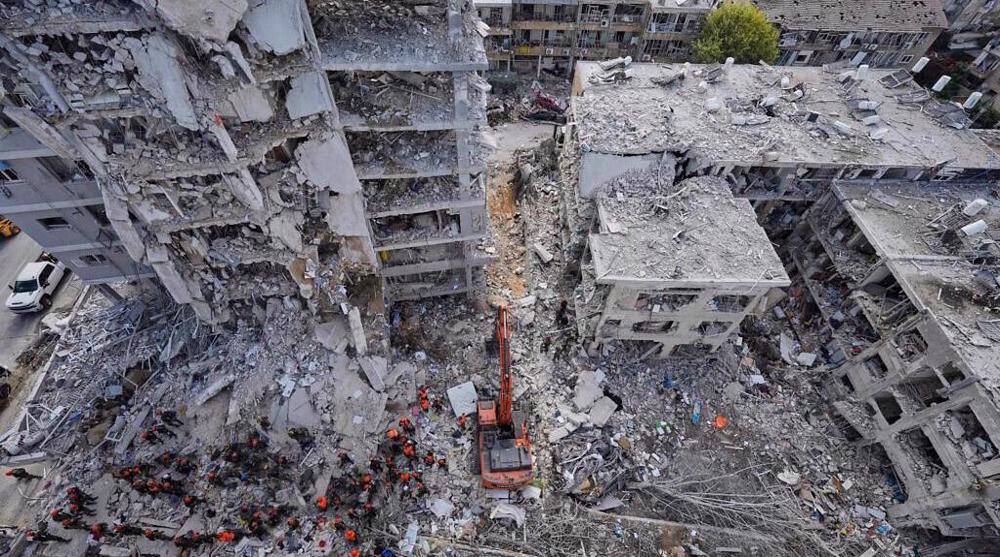

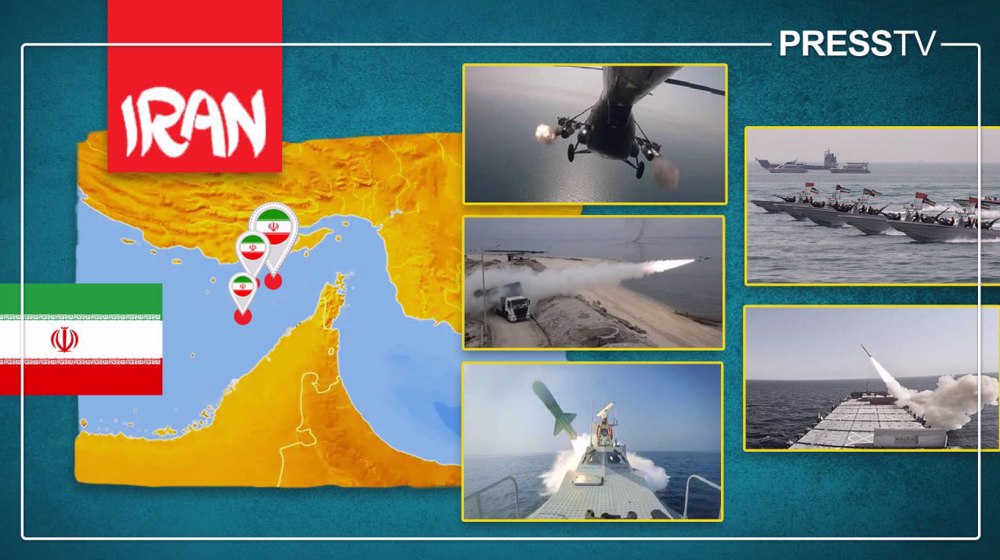




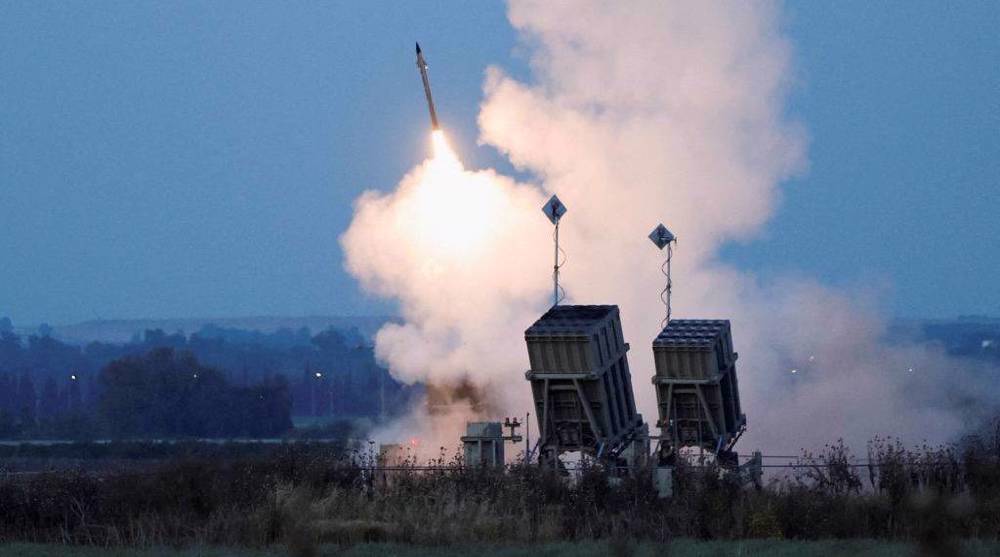

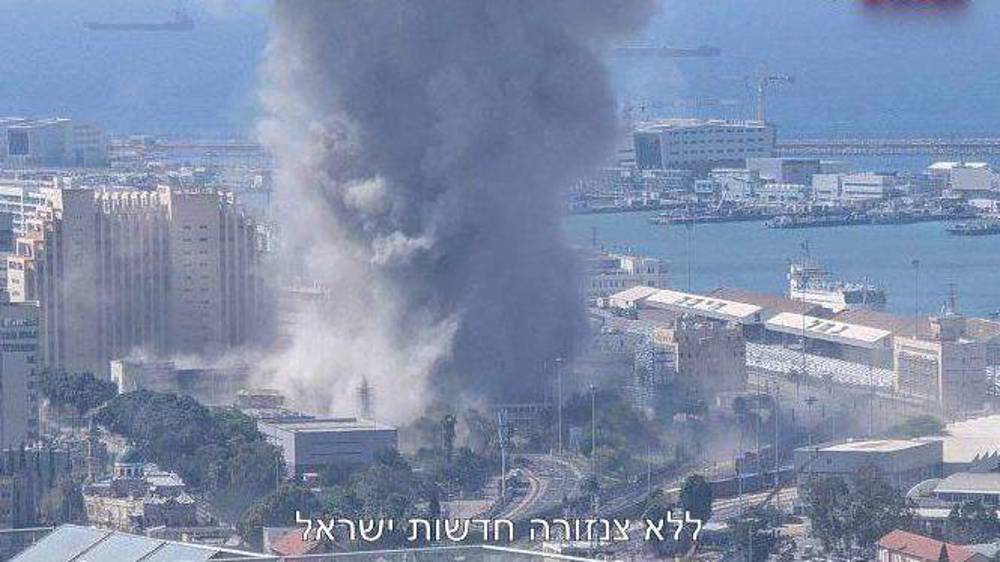
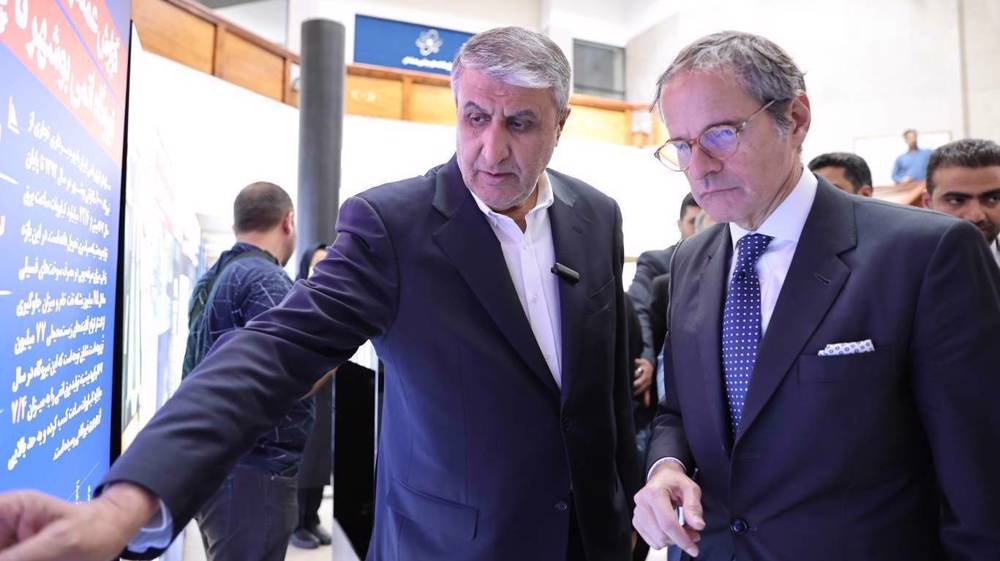

 This makes it easy to access the Press TV website
This makes it easy to access the Press TV website